Original Japanese written by Izumi Koshiyama, a new staffer at No Nuke Project
The English below written and arranged by Heeday, based on the original Japanese
The English edited by Rev. Dr. Henry French, ELCA
Presented below are opinions, impressions, etc. of some participants to the Human Rights Seminar 2016, which met from October 4th through 6th, in Fukushima, Japan.
² I visited Fukushima for the first time after the meltdown began, and I have seen so many things I did not know before. Now, I want to listen more and know more.
² At many farms here, where so many lives were productive before, today we see heaps of radioactive soil collected and packed in vinyl bags—hazardous substances that harm life.
² Many of the bags holding contaminated soil are now broken open. In some cases, grasses are growing through bags. In landscapes that were once so beautiful, now we see deformed trees, uninhabited lovely houses, and…. Looking at all these tragedies, I feel so angry and helpless. What can I do?
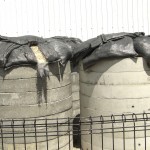
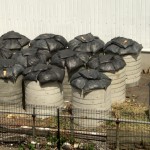
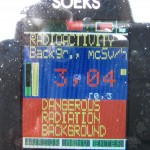
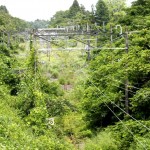
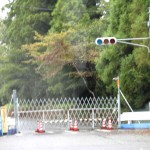
² Nuclear power destroys people’s “everyday lives,” breaks up families, and can even deprive them of their right to live.
² A ghost town inhabited by deserted black vinyl bags containing radioactive soil, and many of them now have one or more torn openings. Nuclear power plants are built by us, and even if we abolish and dismantle these “creations,” “waste” from decommissioned nuclear power plants will remain. Thinking over these cruel facts, I could not sleep because of my fear and anxiety.
² I imagined that the same tragedy had hit the town I live in, and I knew how horrible it would be! The residents here would experience great fear and suffering.
² I am frightened, because my awareness of what happened in Fukushima and Kumamoto (which was hit by a major earthquake in the spring of 2016) is dimming in my mind, as I live my “ordinary” life every day.
² As time passes, I find myself losing sight of the tragedies of Fukushima. I think of how important it is to “see what is not visible.” I hope to be connected to Fukushima always, remembering and thinking of its many tragedies.
² The damage done by the Fukushima Daiichi meltdown must remain in the people’s mind. Some are losing memories of the disaster, and I find that terrifying. It is our responsibility to communicate Fukushima’s story to future generations.
² More than five years have passed since the meltdown began, and now, as I spend some time with those who have no choice but to “live with the meltdown,” I find myself reluctant to talk about nuclear power issues. It is now hard to give honest opinions about them.
² How can I put into words what I am feeling here?
² The heart of the issue is how Japan is today and where it is heading for in the future.
² Japan’s government is determined to put more nuclear power plants back to work, and this policy is highly questionable.
² The government’s principle is “money first,” and that policy is very questionable.
² I see something common between the issues Okinawa is facing and the tragedies of nuclear power. Citizens might have little power, yet we must stand together in protesting against the government’s wrongdoing.
² I have considered the relationship between nuclear power plant accidents and human rights. I see the human right to live being violated in many cases, such as families broken up, local communities destroyed, the conditions for living safely lost, and more. We need to consider the whole issue in terms of what our Constitution guarantees, like fundamental human rights, the right to live, and so on.
